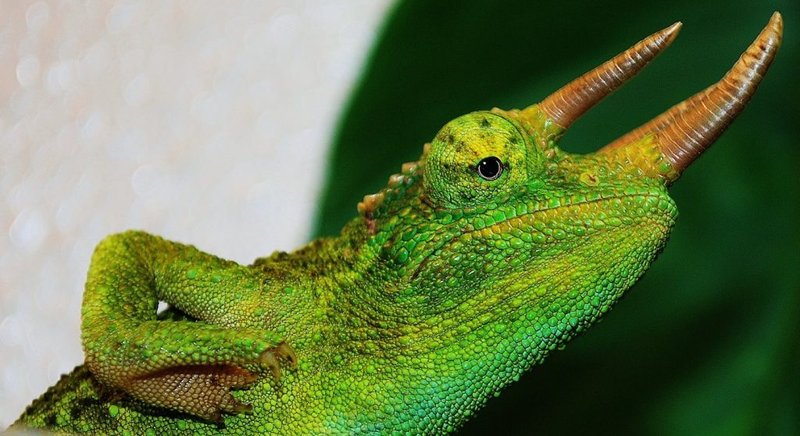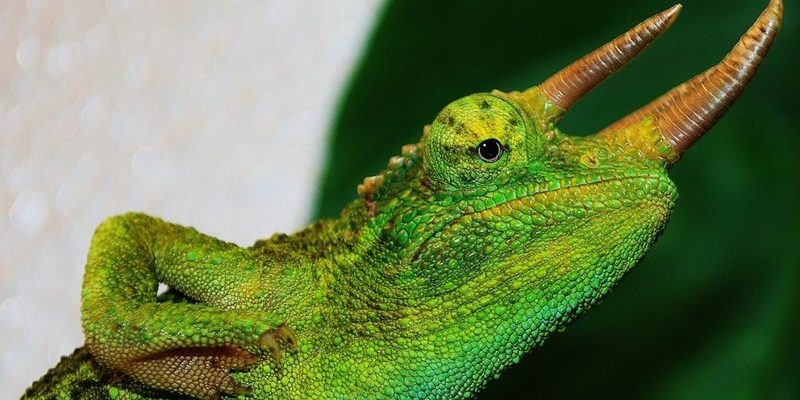
Feeding a Jackson’s chameleon is not just about tossing in some crickets and calling it a day. It’s more like preparing a well-balanced meal for a friend—thoughtful and diverse. These creatures are insectivores, which means their diet mainly consists of insects. However, knowing exactly what, how often, and how much to feed them can sometimes feel overwhelming, especially for first-time chameleon owners. But don’t worry! I’ll break it all down for you.
Understanding the Jackson’s Chameleon’s Diet
Jackson’s chameleons are native to East Africa, primarily found in mountainous forests. This unique habitat influences their dietary habits. In the wild, they consume a variety of insects, including crickets, grasshoppers, and even other small invertebrates. You might be wondering how you can replicate this in your home.
A proper diet for a Jackson’s chameleon typically includes:
- Crickets: A staple food that is easy to find and inexpensive.
- Mealworms: These are also a hit, but they should be fed in moderation due to their high-fat content.
- Silkworms: A nutritious option that many chameleons enjoy.
- Fruit Flies: Especially good for younger chameleons who might be intimidated by larger prey.
It’s important to offer a varied diet. This not only ensures that your chameleon gets a range of nutrients but also keeps them engaged during feeding time.
Essential Nutrients for Your Chameleon
Just like you need a balanced diet, Jackson’s chameleons do too! They require several essential nutrients to thrive. Here’s a closer look at what to include:
1. Protein: Insects provide the protein that chameleons need for muscle development and overall health. It’s the building block of their diet.
2. Calcium: This is crucial for bone health. Chameleons can suffer from metabolic bone disease if they don’t get enough calcium. Dusting your insects with calcium powder before feeding can help meet this need.
3. Vitamins: Chameleons also benefit from vitamins like A, D3, and B12. These are also available in supplement form and should be given a few times a week to ensure they’re getting enough.
4. Hydration: While not a nutrient in the traditional sense, hydration is essential. Jackson’s chameleons often drink water droplets from leaves. Mist your chameleon’s habitat regularly to keep them hydrated.
Feeding Schedule: How Often Should You Feed Your Jackson’s Chameleon?
Now that we know what to feed them, let’s talk about when to feed Jackson’s chameleons. Their feeding schedule will vary based on their age:
– Juveniles (up to 6 months): Feed them multiple times a day—around every 2-3 hours. At this stage, they need the most nutrition to support their rapid growth.
– Adults (6 months and older): Once they reach adulthood, you can reduce their feeding to every other day. This is because their growth rate slows down, and they don’t require as many calories.
Here’s a quick rundown of the feeding schedule:
- Juveniles: 2-3 times a day.
- Adults: Every other day.
Remember, it’s also important to monitor your chameleon’s weight and adjust the feeding schedule if necessary.
Supplementing Your Chameleon’s Diet
While feeding insects is the foundation of a Jackson’s chameleon’s diet, supplementation is the cherry on top. Here’s what you should keep in mind:
1. Calcium Powder: Dust insects with calcium powder before feeding them once or twice a week. This helps prevent bone-related health issues.
2. Vitamin Supplements: Use a vitamin supplement that includes D3 once every two weeks. This is especially important if your chameleon doesn’t get natural sunlight, which helps them process calcium.
3. Gut-Loading Insects: Before feeding the insects to your chameleon, you can also “gut-load” them. This means feeding the insects nutrient-rich foods, such as leafy greens or fortified commercial gut-loading diets, prior to offering them to your chameleon. This way, your chameleon gets extra vitamins and minerals!
Common Mistakes to Avoid When Feeding
Feeding your Jackson’s chameleon might feel simple, but there are a few common pitfalls that you should avoid:
– Overfeeding: Many new owners might think that if a little is good, a lot is better. Overfeeding can lead to obesity and health issues. Stick to the recommended feeding schedule and portion sizes.
– Inconsistent Diet: A varied diet is key. Offering only one type of insect can lead to nutritional deficiencies. Mix things up to keep your chameleon healthy and happy.
– Skipping Supplements: Don’t forget about calcium and vitamins. Regular supplementation is essential for keeping your chameleon in top shape.
– Ignoring Hydration: Chameleons can dehydrate quickly. Ensure they have access to fresh water through misting or a water dish.
Signs of a Healthy Chameleon
You might be wondering how you know if your feeding practices are working. Here are some signs of a healthy Jackson’s chameleon:
– Good Weight: They should have a healthy weight—not too skinny or too chubby. You can usually tell by looking at them from above.
– Bright Colors: Vibrant colors indicate a healthy chameleon. Dull colors can signal stress or illness.
– Active Behavior: They should be alert and engaging. If your chameleon seems lethargic or hides continuously, it could be a sign that something is off.
– Regular Bowel Movements: Healthy poop is brown and firm. If you notice changes in their droppings, it might indicate dietary issues.
Feeding a Jackson’s chameleon is all about balance and variety. By understanding their nutritional needs and maintaining a consistent feeding schedule, you can help your pet thrive. Remember to mix up their diet, incorporate supplements, and keep an eye on their health indicators. With a little attention and care, your chameleon can enjoy a long, vibrant life.
At the end of the day, feeding your chameleon shouldn’t be a chore but rather a rewarding experience. After all, watching them thrive is one of the best parts of pet ownership. So grab that cricket container, dust off the calcium powder, and let’s keep those chameleons happy and healthy!

